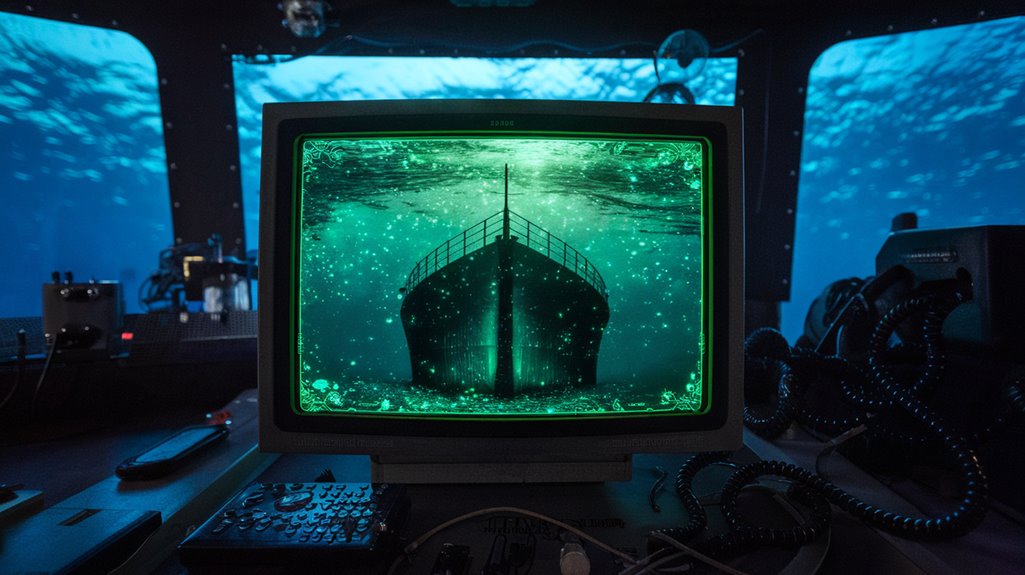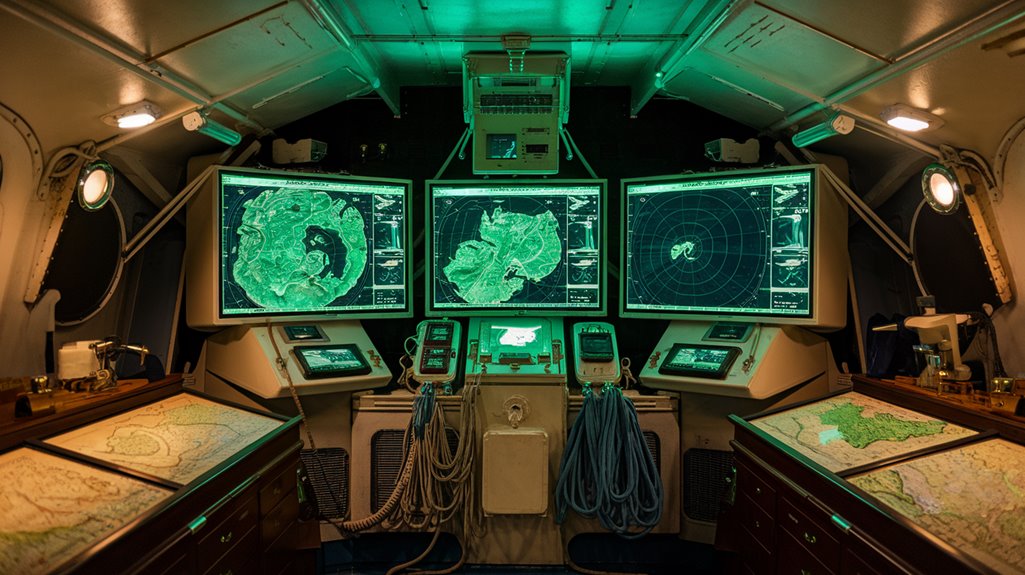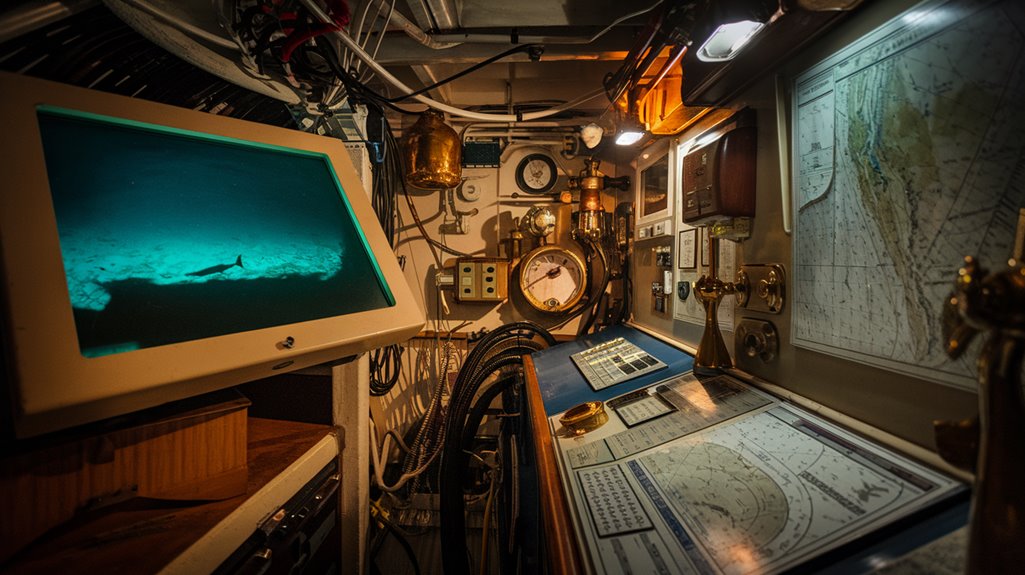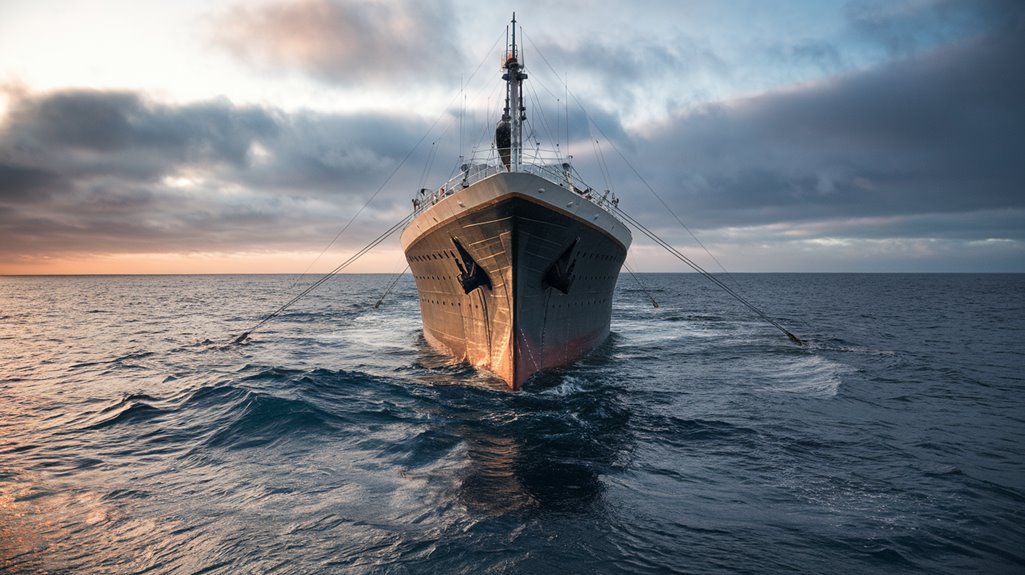They Found the Titanic by Searching for Lost Submarines
You might think finding the Titanic was just a matter of searching where it sank, but there's a fascinating twist to this historic discovery. The famous shipwreck wasn't located through a straightforward search mission – it was actually found during a classified Cold War operation to locate two missing U.S. nuclear submarines. This secret naval connection explains why the breakthrough happened in 1985, and not during earlier attempts. The real story behind the Titanic's discovery reveals how military objectives can lead to unexpected historical treasures.
The Secret Mission Behind Titanic's Discovery

While millions know the story of the Titanic's discovery in 1985, few realize that finding the famous shipwreck wasn't the mission's primary objective.
You might be surprised to learn that the U.S. Navy funded Robert Ballard's underwater technology project to locate two sunken nuclear submarines: the USS Scorpion and USS Thresher.
The Navy allowed Ballard to search for the Titanic only after he'd completed his main task and confirmed there was no Soviet involvement in the submarines' sinking.
This secret remained hidden for 23 years until 2008, when Ballard revealed the truth to National Geographic.
The mission revolutionized maritime archaeology through its advanced imaging systems, including ANGUS and Argo, which ultimately helped locate the Titanic 12,400 feet below the surface.
After a 31-day initial cruise, researchers endured rough weather conditions but remained determined to find the historic vessel.
When Ballard finally located the wreckage, he discovered the ship had split into two pieces during its descent to the ocean floor.
Cold War Deception and Naval Strategy
During the Cold War, America's naval strategy hinged on maintaining an overwhelming presence at sea through a combination of deception, deterrence, and raw military power.
You'd find the U.S. Navy engaging in naval espionage and strategic deception to maintain its dominance over the Soviet Union, which struggled as a traditional land power trying to compete at sea. The discovery of the Titanic wreckage was actually part of a covert military mission to study two sunken nuclear submarines.
America's advantage lay in its nuclear-powered carriers and submarines equipped with Polaris missiles, which served as mobile deterrents that were nearly impossible to track. The Navy successfully launched the USS George Washington as the first missile submarine, marking a significant advancement in nuclear deterrence capabilities.
The Navy's ability to control the seas while conducting special operations and maintaining tight blockades made it a formidable force.
While the Soviets developed anti-ship missiles to counter this supremacy, they couldn't overcome the Free World's centuries of naval experience and strategic superiority in oceanic warfare.
Lost Nuclear Submarines: USS Scorpion and USS Thresher
America's naval dominance came at a steep cost. You'd find no starker reminder of this than the tragic losses of USS Scorpion and USS Thresher, the only two nuclear submarines ever lost by the U.S. Navy.
Robert Ballard, an intelligence officer, worked extensively with both the Army Reserves and active duty Navy before undertaking the submarine search.
When Scorpion vanished in 1968, investigators discovered its crushed remains at nearly 10,000 feet below sea level. Multiple theories emerged: a malfunctioning torpedo, a faulty trash disposal unit, or a hydrogen explosion from battery charging. The submarine was found pointed 180 degrees away from its intended course, lending weight to the hot torpedo theory.
These disasters reshaped submarine technology and nuclear safety protocols. While the Navy kept many details classified due to radiation concerns, the search operations yielded unexpected benefits.
When you hear about Robert Ballard's discovery of the Titanic in 1985, you're actually learning about an operation that began as a classified mission to locate these lost submarines.
How Submarine Search Methods Led to Finding Titanic
Before Robert Ballard located the Titanic in 1985, his team pioneered search methods originally designed to find lost nuclear submarines. This expertise proved invaluable when searching for the famous shipwreck.
You'll find that early sonar technology like Sea MARC wasn't adequate for such deep-water searches. The breakthrough came when Woods Hole Oceanographic Institution developed the Argo/Jason system, combining advanced sonar with cameras.
By partnering with IFREMER and their SAR high-resolution sonar, the team could effectively survey the seabed. They deployed underwater vehicles and towed sleds to explore the ocean floor, focusing on finding the debris field rather than the wreck itself. After initially passing within a few hundred yards of the Titanic without detecting it, the team adjusted their strategy. The expedition utilized the Research Vessel Knorr to tow their deep-sea cameras and equipment during the historic discovery.
The joint WHOI-IFREMER mission narrowed their search to 100 square miles, demonstrating how submarine search techniques could revolutionize deep-sea exploration.
The Military Connection That Changed Maritime History

While the world celebrated Robert Ballard's discovery of the Titanic in 1985, few knew the expedition's true purpose.
The Woods Hole Oceanographic Institution played an instrumental role in the historic discovery. The U.S. Navy had secretly funded this maritime exploration mission to examine two sunken nuclear submarines, using the Titanic search as a clever cover story. The tragic sinking of these vessels, including the USS Thresher and USS Scorpion, claimed the lives of 129 sailors.
This military connection changed the course of maritime history in three major ways:
- Advanced military technology, designed for locating submarines, proved essential in finding the Titanic.
- The expedition showcased the Navy's sophisticated underwater capabilities while maintaining Cold War secrecy.
- The classified nature of the mission protected the submarine locations from Soviet detection.
You wouldn't learn about the mission's true purpose until 2018, when the National Geographic Museum revealed how this covert military operation inadvertently led to one of history's greatest shipwreck discoveries.










